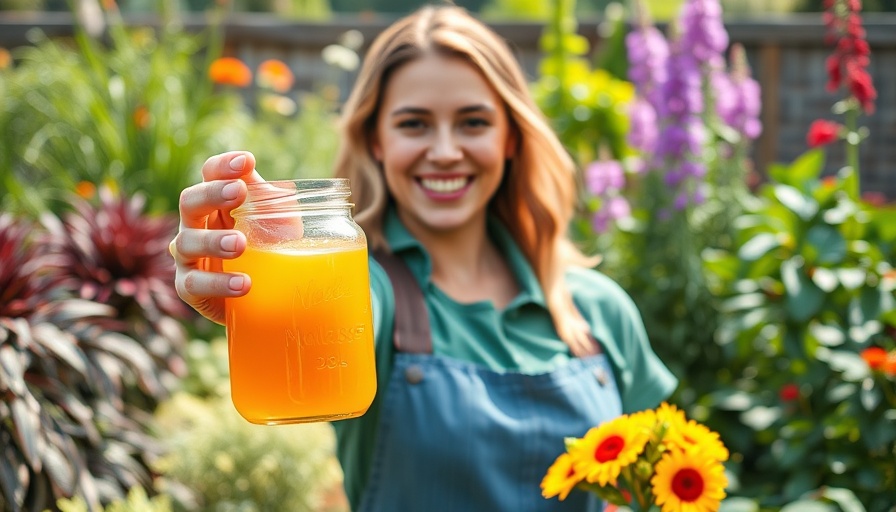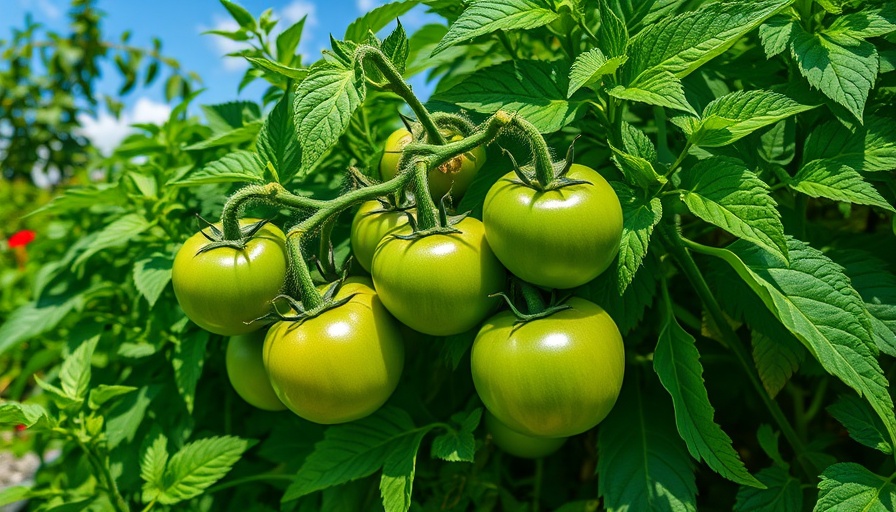
Transforming Your Garden's Bounty Into Thoughtful Gifts
As the seasons change, many homeowners with gardens find themselves looking for creative ways to use their harvests. From vibrant vegetables to fragrant herbs, the produce harvested from our own gardens can be transformed into meaningful gifts for friends and family. One delightful idea gaining popularity is creating homemade simmer pot jars, a beautiful way to share the essence of your garden and the warmth of the holiday season.
In 'Garden to Gifting: Garden Grown Simmer Pot Jars,' the discussion dives into innovative gifting ideas for the holiday season, exploring key insights that sparked deeper analysis on sharing your garden's bounty.
Elevating Holiday Gifting with Simmer Pots
The concept of simmer pot jars involves combining dried herbs and spices that not only elevate your home’s aroma but also encapsulate the spirit of the season. Imagine the delightful scents of rosemary, thyme, and bay leaves mingling with the zesty fragrance of dried orange slices, star anise, and a cinnamon stick. This combination creates a unique sensory experience that your loved ones can enjoy year-round. Packaged in charming jars, these simmer pots make for excellent gifts that convey care and creativity.
The Historical Significance of Holiday Gifting
The tradition of giving gifts during festive seasons has roots in many cultures worldwide. Historically, it has often been a way to strengthen connections, express gratitude, and share abundance. By making gifts from your garden, you’re not just sharing herbs; you’re reflecting a family tradition that celebrates both generosity and sustainability. These homemade items not only provide warmth but are also reminders of the natural beauty around us.
Creating the Perfect Simmer Pot Blend
Here’s how you can create your very own simmer pot jars. Start by choosing your favorite dried herbs and spices. A delightful blend might include:
- Rosemary - adds a refreshing pine-like flavor and is known for its strong, fragrant aroma.
- Thyme - a classic herb that enhances many dishes and brings a warm scent.
- Bay Leaves - their subtle earthy notes contribute depth to the aroma.
- Dried Oranges - these add a sweet and zesty fragrance, perfect for the holidays.
- Star Anise - known for its licorice taste, is a fascinating spice that can create a beautiful visual.
- Cinnamon Sticks - nothing says 'holiday spirit' like the warm, sweet smell of cinnamon!
Mix these ingredients in a clear jar for a beautiful display that captures the essence of your kitchen garden. Label the jars with instructions for use, suggesting recipients simmer their blends in water on the stove to fill their home with delightful aromas.
Why This Gifting Idea Resonates
The appeal of giving garden-grown gifts lies in their personal touch. In a world filled with mass-produced products, there’s something inherently special about gifting something handmade and infused with your care. It becomes more than just a present; it’s an invitation to experience your garden’s magic and create lasting memories. Such unique gifts can be especially appreciated during festive times when people are seeking comfort and warmth.
Practical Tips for Successful Gifting
1. Choose Quality Ingredients: Make sure the herbs and spices are high-quality to ensure a wonderful experience for the recipient. 2. Use Eco-Friendly Packaging: Consider using recycled or biodegradable materials for packing your jars to make gifting more sustainable and environmentally friendly. 3. Create a Personal Touch: Include a handwritten note that shares your thoughts or memories associated with each ingredient, making the gift even more personal and special.
Connecting with Your Community Through Gifting
As this festive season approaches, remember that sharing gifts made from your garden can foster connections within your community. Whether you’re distributing gifts to neighbors, friends, or family, these small gestures can spread joy and remind everyone of the simple pleasures found in nature.
Final Thoughts
In conclusion, the art of gifting garden-grown simmer pot jars transcends mere presents; it embodies thoughtfulness, creativity, and the spirit of giving back. By weaving individual stories through each jar and sharing the scents of our gardens, we not only enrich our relationships but also celebrate the bounty that nature provides. So this holiday season, consider transforming your garden's harvest into thoughtful gifts that warm hearts and homes.
 Add Row
Add Row  Add
Add 




Write A Comment